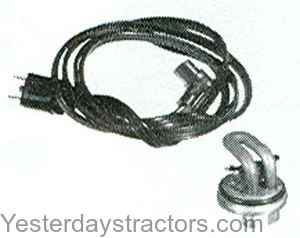My Chrysler flathead 6 won't start at temps below 20F .
I'd like to add the most efficient heater as I'll need to power it with a portable generator.
I see that there are magnetic ( oil pan ) heaters, dipstick heaters, heaters that install in a freeze plug and in-line water heaters.
Does anyone have an opinion on which works the fastest ?
At the moment, I'm leaning towards using 2 magnetic heaters. One stuck on the oil pan and one stuck on the block.
Thanks
I may be repeating some advice that others gave, but I will give it a shot for you.
Here in Alaska, preheating an engine before starting at -50 and colder isn't an option, it is the only way to even get the engine to turn over.
There are two types of block heaters that we use. One is a freeze plug heater that inserts a heating element into the block by removing the round freeze plug. These are good if you want to leave your engine plugged in all night and start it in the morning. They use between 300 and 500 watts of power.
The other is a circulation heater (tank type) that takes water from the bottom drain plug on the block, heats it and returns it back into the top of the block by the heater hose. These use up to 1500 watts of power and are good from taking a frozen cold block to starting it in a few hours (if not sooner). I prefer that type of block heater because they are fast and I don't have to leave the vehicle plugged in all night and they have a temp control switch built into them that shuts on and off as the coolant gets hot... The freeze plug heater has no switches that causes it to turn on or off, it is on all the time it is plugged in.
They make a heater that you cut the bottom radiator hose and put in-line, but those are mostly a waste of money and time. The thermostat on top of the block has to be open to allow water to circulate to heat the block and since that is closed on a cold block, there is little movement of the hot water.
On the engine oil/transmission pan, we put heating pads that run from 50 watts to 100 watts on the average. They are siliconed to the pan and ducted tape until the silicone sets and sticks.
Many use a battery heater that uses a blanket that wraps around the battery or a plate that sits under it and keeps the battery warm.
Anyway, there is a host of options, but for what the temps in your area get down to. More than likely, just a circulation block heater will be all you need, a pan heater will warm the oil at the same time and will help the pressure come up when you first start the engine, but the oil will heat quickly as it goes though a warmed engine.
The Magnetic heaters don't really put out that much heat for getting the block warm in the cold, but they do work if you have a lot of time to kill, but are not very efficient
Good luck and hope this helps out.
Here is some web sites that may help.
http://www.zerostart.com/Files/us_zerostart_04cat.pdf
http://www.jcwhitney.com/autoparts/...005253/N-111+2006+200728571+600013984/c-10101
http://www.partsamerica.com/BrandCategories.aspx?MfrCode=FIV








